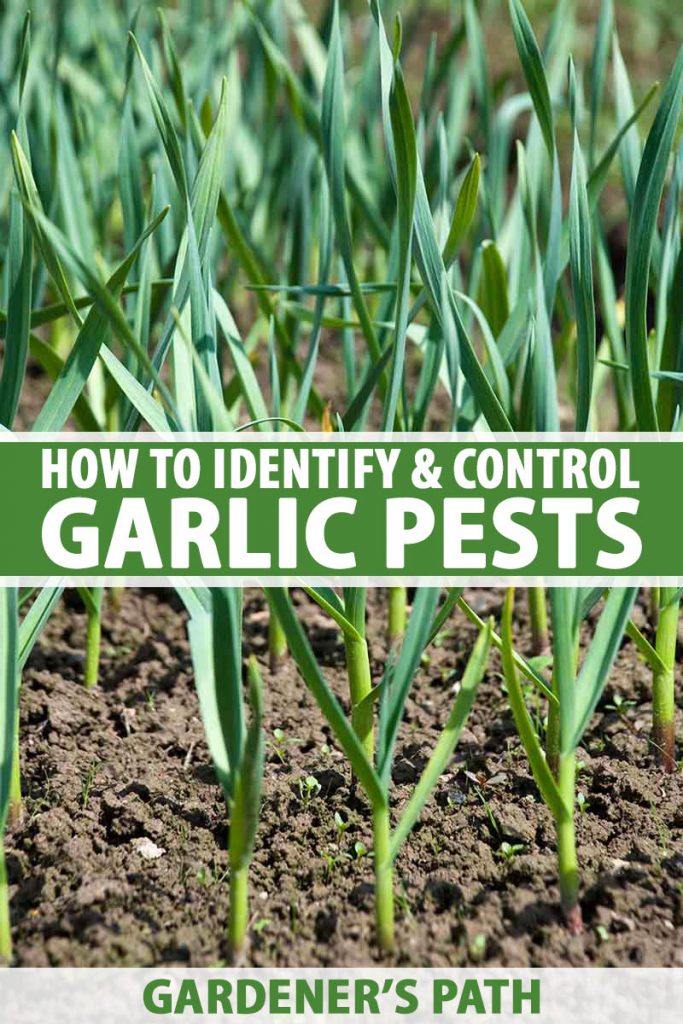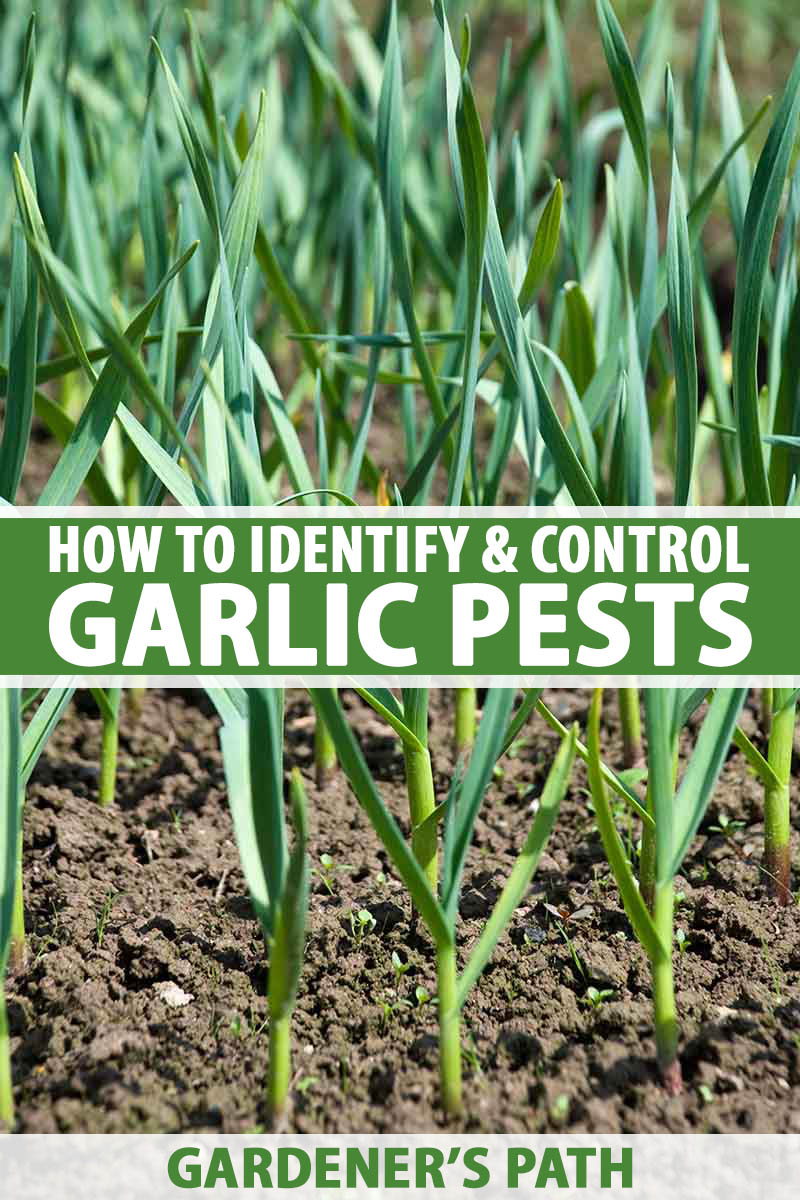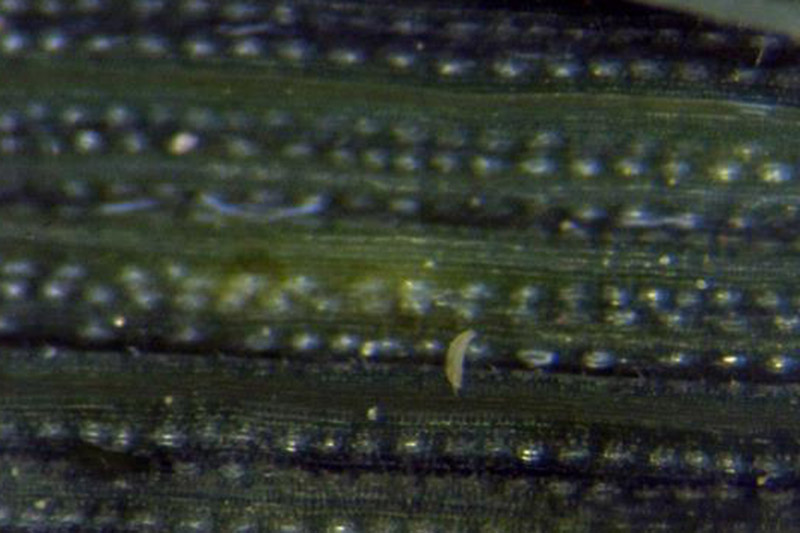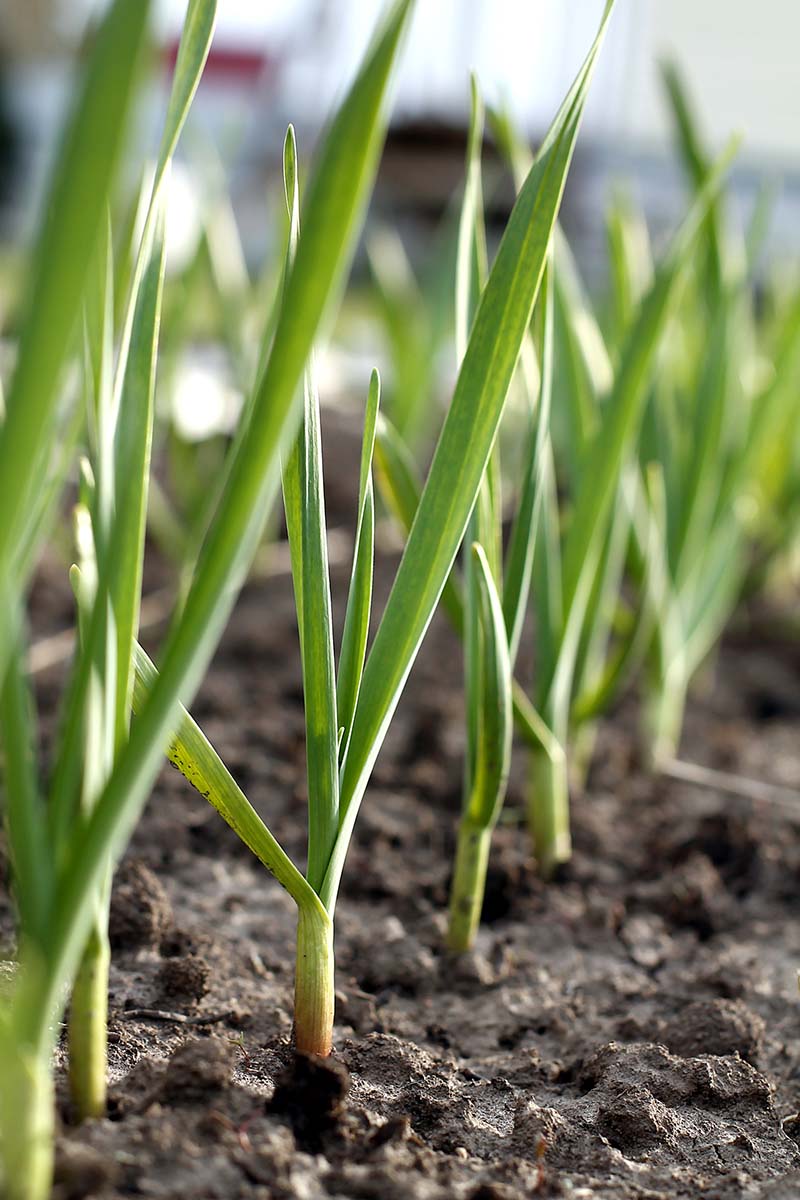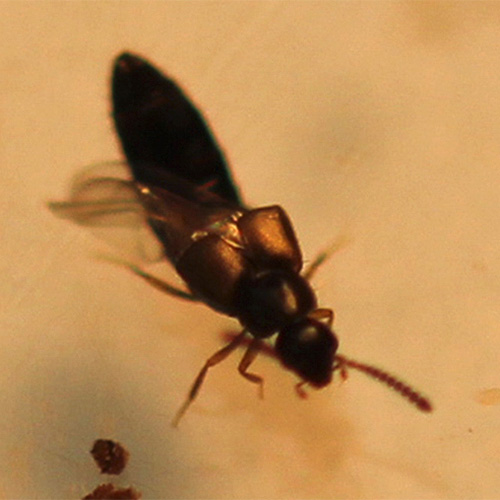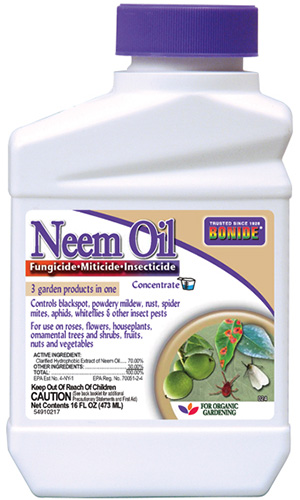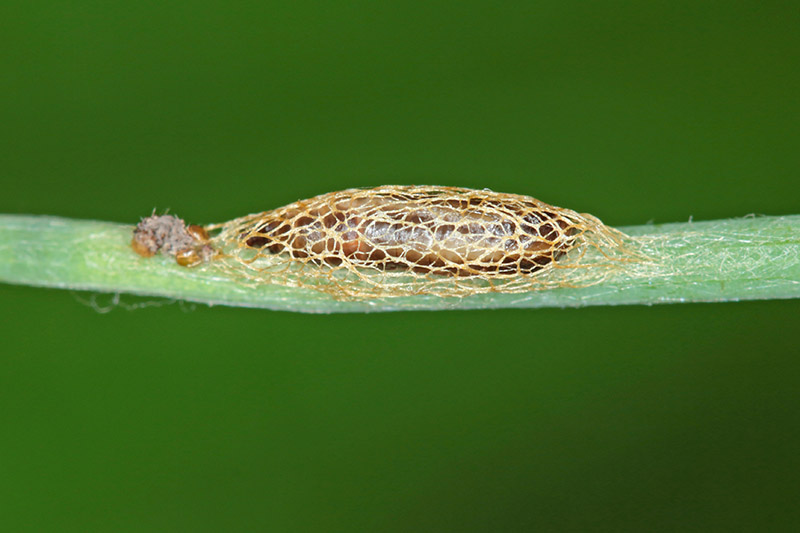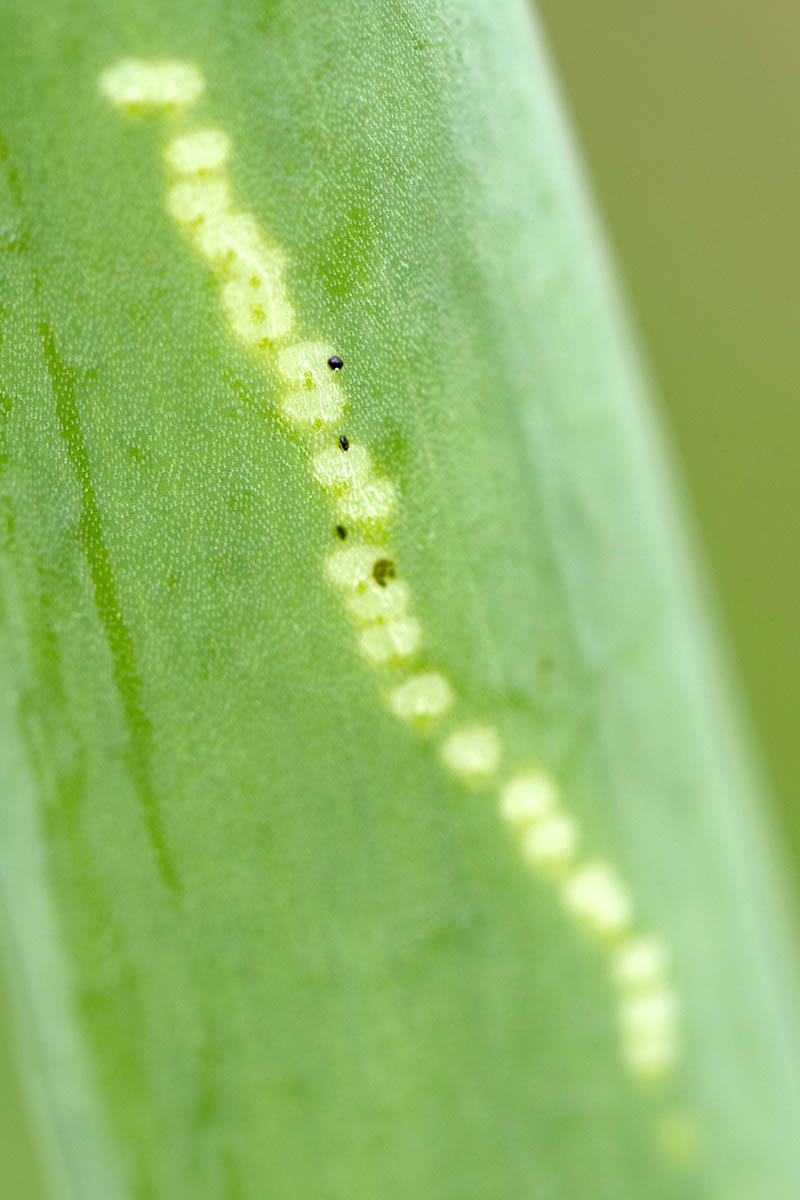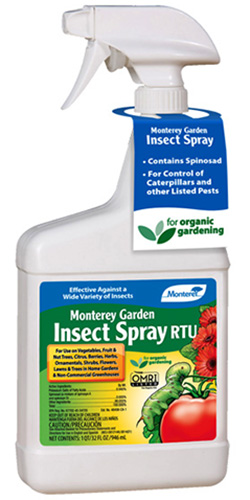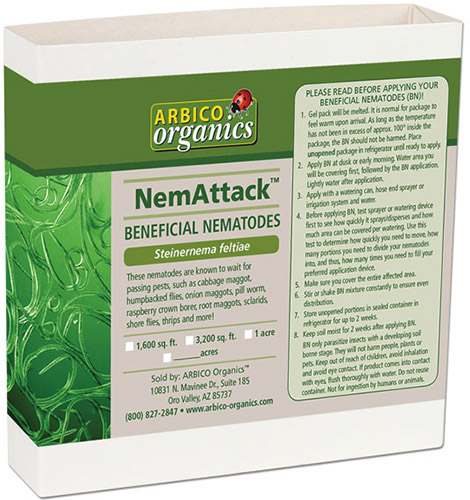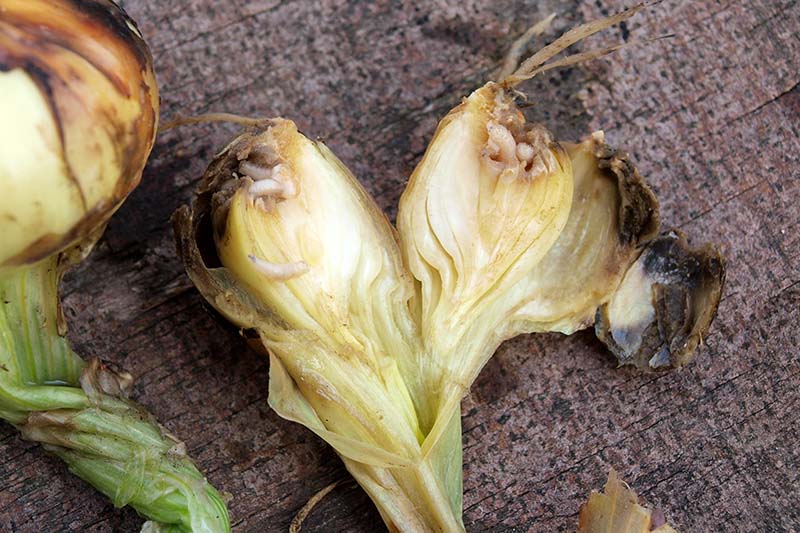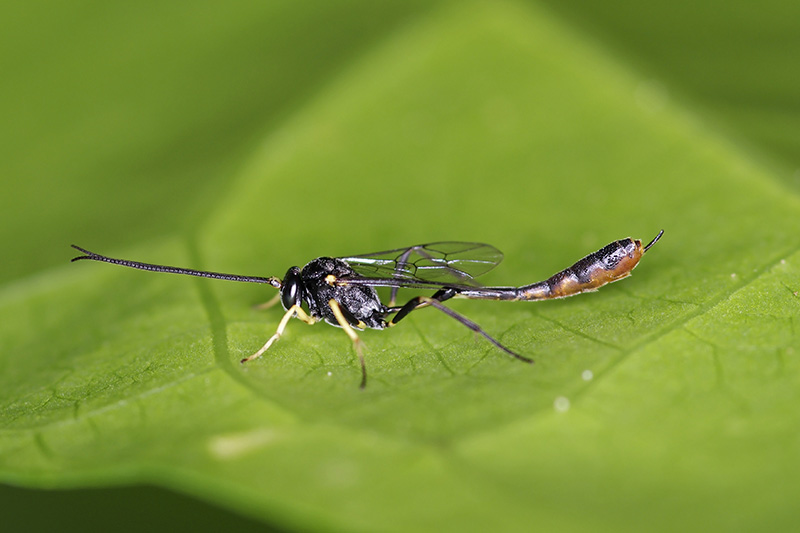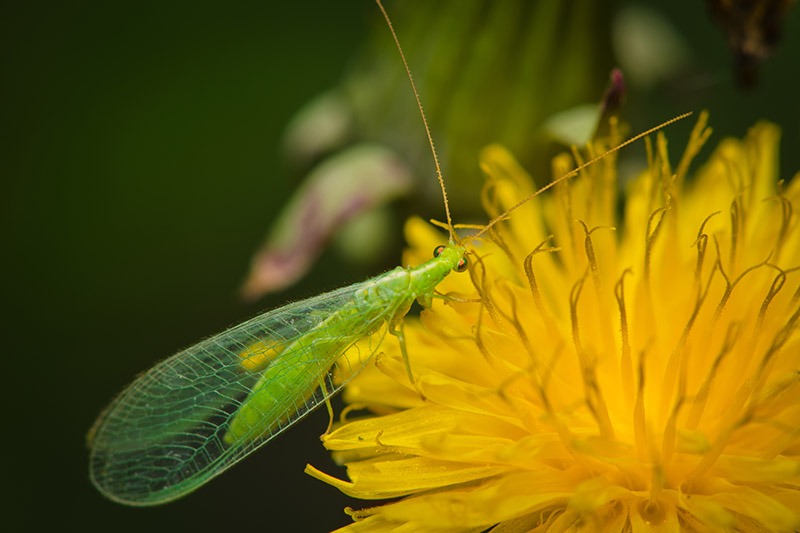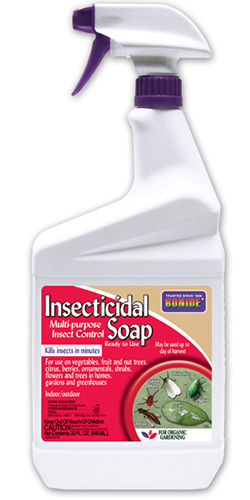It’s even used as a pest deterrent in the garden, planted as a companion for roses, peppers, and tomatoes to keep pesky insects away. But we think it’s delicious, so why shouldn’t the bugs? There are some creepy crawlies out there that are immune to garlic’s sulfuric pungency. We link to vendors to help you find relevant products. If you buy from one of our links, we may earn a commission. Here are the pests we’ll cover:
Bulb Mites
There are several types of bulb mites that plague garlic and other Alliums, but according to researchers Agnieszka Majer, Brian Rector, et al., in a paper published in the Experimental and Applied Acarology Journal, dry bulb mites are one of the most significant and widespread garlic pests. Dry bulb mites are part of the same taxonomic class, Arachnida, as spiders and ticks. This pesky critter is considered an eriophyid mite, though its scientific name is Aceria tulipae. Dry bulb mites are usually 0.3 millimeters long or smaller at maturity, and look like tiny, curled worms. They go through their entire life cycle in just one to two weeks, so you’re likely to see them in every stage – from egg to larva to nymph to adult – at any time of the year. If you have a strong magnifying glass, that is. These mites spend the winter inside stored cloves or in the ground with fall-planted garlic.
True to their name, dry bulb mites feed exclusively on bulbs: garlic, tulip, onion, and lily, to be exact. They live between the layers of a garlic clove or inside the leaves and feast from within, often causing galls to appear. Other signs of dry bulb mite infestation include twisted, stunted leaves and failure to develop past a certain point. The other major mite group that feasts on garlic are the bulb mites of the Rhizoglyphus genus, most particularly R. echinopus. These bulb mites look like squishy, damp pearls, have four sets of legs, and reach a size of 0.5 to 1 millimeter in length. Like the dry bulb mite, this one also completes its life cycle in two weeks. Its eggs are white and oval-shaped. Larvae emerge with three pairs of legs, but nymphs and adults have the full four sets. Plants affected by bulb mites will often be stunted – or you might not notice anything until the cloves are stored and begin to rot. If you notice brown spots and decay on the wrappers and cloves, you can put both types of bulb mites high on your list of suspects. With all types, the females lay eggs on the leaves of your plant, and when the eggs open, they release dozens of hungry larvae that can ruin your crop. Larvae, nymphs, and adult mites will all feast on every part of a bulb, whether it’s in the ground or harvested. You can still eat whatever’s left of your cloves after bulb mites get to them, but it’s best to treat them before they ruin your crop.
How to Manage Bulb Mites
Bulb mites are resistant to chemical pesticides, so your best bet is to manage them with cultural, predatory, and organic pest control methods. Mites can live in the soil through successive growing seasons, so it’s important to rotate your crops and avoid planting alliums in the same area for the next four years. Don’t designate a raised bed to be your garlic bed forevermore. Instead, plant your garlic there one year, switch it out for carrots the next, and so on. Only use the same raised bed or other planting area – or the same soil, for that matter – to grow alliums again after four years have passed. But that’s not all. It’s also important to avoid planting Alliums after growing brassicas, corn, wheat, or grass in the same area, as these play host to mites as well. According to experts at the University of California’s Integrated Pest Management Program, soaking seed cloves in hot water at 130°F for 10-20 minutes before planting can decrease the chance of infestation by killing any existing mites or eggs. They also note that this can inhibit germination, and water temperatures over 132°F can damage the clove tissue – so keep a cooking thermometer handy. When those eggs hatch into larvae, the whitish-yellow, 8-millimeter-long maggots tunnel inside the leaves, eating the tissue. They continue to do so as they turn into red-orange, 3.5-millimeter-long pupae.
Live Rove Beetles, Dalotia coriaria Pull and destroy the infected plant or plants, and then let loose one to two live rove beetles per square foot of the affected area. You can purchase rove beetles from Arbico Organics in packs of 100 for smaller gardens, all the way up to 3,000 per package for large crops. These beetles won’t harm your garden, but they’ll feast on the bulb mites.
Bonide Neem Oil You can also use an organic insecticide to spray the entire growing area, according to package instructions, like this neem oil-based product from Bonide, available from Arbico Organics.
Leafminers
Allium leafminers, Phytomyza gymnostoma, are small yellow and black flies that lay tiny, curled, white eggs on the undersides of leaves.
They will also eat their way down into the bulbs themselves. Telltale white, curving squiggles and holes on the stalks and leaves will alert you to the presence of these wretched little creatures.
How to Manage Leafminers
If leafminers are a known problem in your area, consider installing floating row covers to keep adult flies away from your crops. Make sure to place them right after planting in the spring. You can also install them during fall plantings, as leafminer flies often look for host Alliums to overwinter in, and you don’t want them to choose your garlic crop.
Keep the area around your plants mulched and weed-free to limit the spread of leafminers. And as soon as you see that telltale white streak on a leaf anywhere in your garden, remove and destroy the leaf immediately.
Continue to check the area regularly, to ensure that any additional larvae are destroyed before they can damage your plants. Leafminers multiply quickly, especially in warm weather, when their life cycle can take as little as two weeks to complete, often ending with the mature adults laying more eggs. These flat, microscopic, soil-dwelling roundworms complete their entire life cycle in about 21 days within the bulbs, stems, and leaves of your garlic. Within a couple of weeks, the wasp larvae will turn into full-grown parasitic wasps that will then kill more leafminers.
Parasitic Wasps Parasitic wasps to set loose in your garden are available at Arbico Organics or at your local nursery. If the infestation gets bad enough to warrant the use of an insecticide, try using spinosad, a chemical naturally derived from the soil bacteria Saccharopolyspora spinosa.
Monterey Garden Spinosad Insect Spray This is your best bet because spinosad is an organic insecticide that does minimal damage to the beneficial predatory bugs you don’t want to get rid of – like parasitic wasps. You can find spinosad spray available from Arbico Organics.
Nematodes
Some nematodes are beneficial to plants, but not the garlic bloat nematode, Ditylenchus dipsaci. Feeding destroys the plant, causing the foliage to turn yellow and wilt. The ruined bulbs often swell up – or bloat, hence the name “garlic bloat nematode” – before turning soft and brown, and they become prime territory for fungal infections.
How to Manage Nematodes
Nematodes can live in dead, dried out host tissue, so make sure your planting area is free of dead Allium plant material. If you plant Allium crops in an area one year, avoid planting any Alliums there again for the next four years. You should also avoid planting celery, parsley, hydrangeas, flower bulbs, and alfalfa in successive years, as the nematodes like to feast on those crops as well. Keep the garden free of weeds, as the pests can live in host weeds – particularly field thistle and hairy nightshade – that are surrounding your garlic. They’ll happily make the short trip from there to your precious bulbs. It’s also important to clean and sanitize your garden tools before and between each planting project. Nematodes can’t move very far on their own, but they’re easily spread through infected gardening tools, gloves, and even on the bottoms of your favorite gardening shoes!
Most nematode infestations happen because an afflicted clove is unknowingly planted in the garden. To ensure that nematodes aren’t living in your seed garlic, you may soak cloves in 120°F water for 20 minutes to heat treat them. The high temperature should kill any existing bugs or eggs. But note that the experts at the University of Maine Cooperative Extension do not recommend doing this without professional equipment. Instead, purchase heat treated seed garlic from a reputable source. If you’d rather use an insecticide, a spray made with a high concentration of neem oil can kill parasitic nematodes while leaving beneficial ones unharmed.
5 Million Live Sf Nematodes Try letting loose this package of five million live Sf nematodes (Steinernema feltiae), available from Arbico Organics. Arbico recommends adding five million Sf nematodes to every 1,600 square feet of land. The beneficial nematodes will parasitize the bad ones, killing them. Check out our guide to learn more about using beneficial nematodes to control garden pests. To make your own neem oil spray, add 1 teaspoon neem oil and 1/2 teaspoon dish soap to 1 quart warm water. Mix well and add to a spray bottle, then spray your affected plants until they’re damp. Reapply as needed, once a week.
Onion Maggots
Unlike nematodes, onion maggots (Delia antiqua), are big, growing to about 1 centimeter long, and they can travel. Well, they can when they’re mature flies, anyway. Delia antiqua pupae hang out in the soil all winter. But in springtime, they emerge from the soil as adult flies who’ll travel up to a mile to find your garlic plants, in order to lay their eggs in the surrounding soil, or occasionally on the leaves. The newly hatched larvae, or maggots, will eat everything: roots, bulbs, stems, and leaves.
The eggs favor cooler temperatures, and perish when the first inch of soil reaches a temperature of 95°F. Once the larvae hatch, they head for the roots, and their munching will destroy the entire root system of your plants. The first signs of onion maggot damage are wilted or stunted leaves. To find out if the flies are in your garden, set yellow sticky cards around your crops. If you trap narrow-bodied, five- to seven-millimeter-long flies with humped backs, it’s time to get ready to manage some maggots.
How to Manage Onion Maggots
Crop rotation will definitely help to keep onion maggots – the larvae of onion flies – from ravaging your garlic crop year after year. Don’t plant any Alliums in the same soil in consecutive years, and follow the every-four-years rotation guideline described above.
You can also cover your crop with a floating row cover immediately after you plant seeds or transplant seedlings, to prevent mature female onion flies from laying eggs – which look like grains of white rice. As an extra precaution, consider adding diatomaceous earth to the area around your plants, to kill the soft-bodied larvae once they hatch. Reapply after periods of rain. Luckily for you, there are several predatory bugs that feast on onion maggots. Beneficial live Sf nematodes are one of these. Rove beetles, as described above, are another. Take your pick!
If you see any onion fly eggs, clear out the affected soil and plants, and spray the area with insecticide. For a natural pest control option, choose a spinosad-based spray. Most chemical pesticides for treating an infestation of onion maggots target the larvae, and should be administered at seeding time. You can use a heavy duty pesticide like Trigard or Lorsban at the time of planting, but beware: these can also kill beneficial insects, and they but won’t get rid of onion maggots that have already hatched. For that, you’re better off with a predatory control method via beneficial insects.
Thrips
These tiny bugs, less than 1 millimeter in size, are common throughout the garden, and they’re a real annoyance to gardeners everywhere. Onion thrips, Thrips tabaci, and Western flower thrips, Frankliniella occidentalis, specifically attack garlic and other members of the Allium genus by sucking the juice from their leaves. Onion thrips are narrow, translucent orange in color, and slightly reminiscent of bees, but much tinier at just over 1 millimeter long. Western flower thrips are 1.5 millimeters long, narrow, and translucent yellow with a black streak between their wings. Both are tiny, but visible to the naked eye. Thrip-infested leaves will appear dotted with whitish spots. They may also take on a silvery hue.
Thrips don’t immediately kill plants, but over time they can cause a lot of damage to a plant’s overall health, leaving it susceptible to disease.
How to Manage Thrips
As always, crop rotation is advisable here, as is keeping your garlic patch weed-free. Thrips can easily move from weeds to your garlic plants. Watering from above (via overhead irrigation) can also help keep plants thrip-free, as these bugs thrive in hot, dry conditions.
If you have dandelions in your yard, leave them there! They attract lacewings, as do dill, coriander, and fennel flowers. Another option is to purchase predatory bugs from a local nursery, or from Arbico Organics.
Bonide Insecticidal Soap You can also try using insecticidal soap, like this one from Arbico Organics, for moderate infestations – and spinosad or neem oil spray for heavy infestations. You should steer clear of harsh chemical pesticides because they can kill beneficial predatory insects, which are one of the top natural defenses against thrip damage for home gardeners. Read more about controlling thrips here.
Garlic Pests Begone
Now that you know the five most likely ravagers of your precious garlic crop, you can prepare to fend the destructive critters off. That old saying, an ounce of prevention is worth a pound of cure, is especially true when it comes to keeping your plants pest-free.
By rotating crops, covering newly planted seedlings, and providing your garlic with adequate soil drainage and watering, you can avoid a lot of pest issues. Do you have any questions about garlic bugs? Ask in the comments below! And feel free to share your tips. To learn more about growing garlic in your garden, check out these guides next:
How to Plant and Grow Garlic in Your Veggie Patch The Three Ways to Propagate Garlic How to Cure and Store Garlic from the Garden Tips for Growing Garlic in Containers
© Ask the Experts, LLC. ALL RIGHTS RESERVED. See our TOS for more details. Product photos via Arbico Organics. Uncredited photos: Shutterstock. With additional writing and editing by Clare Groom and Allison Sidhu.
